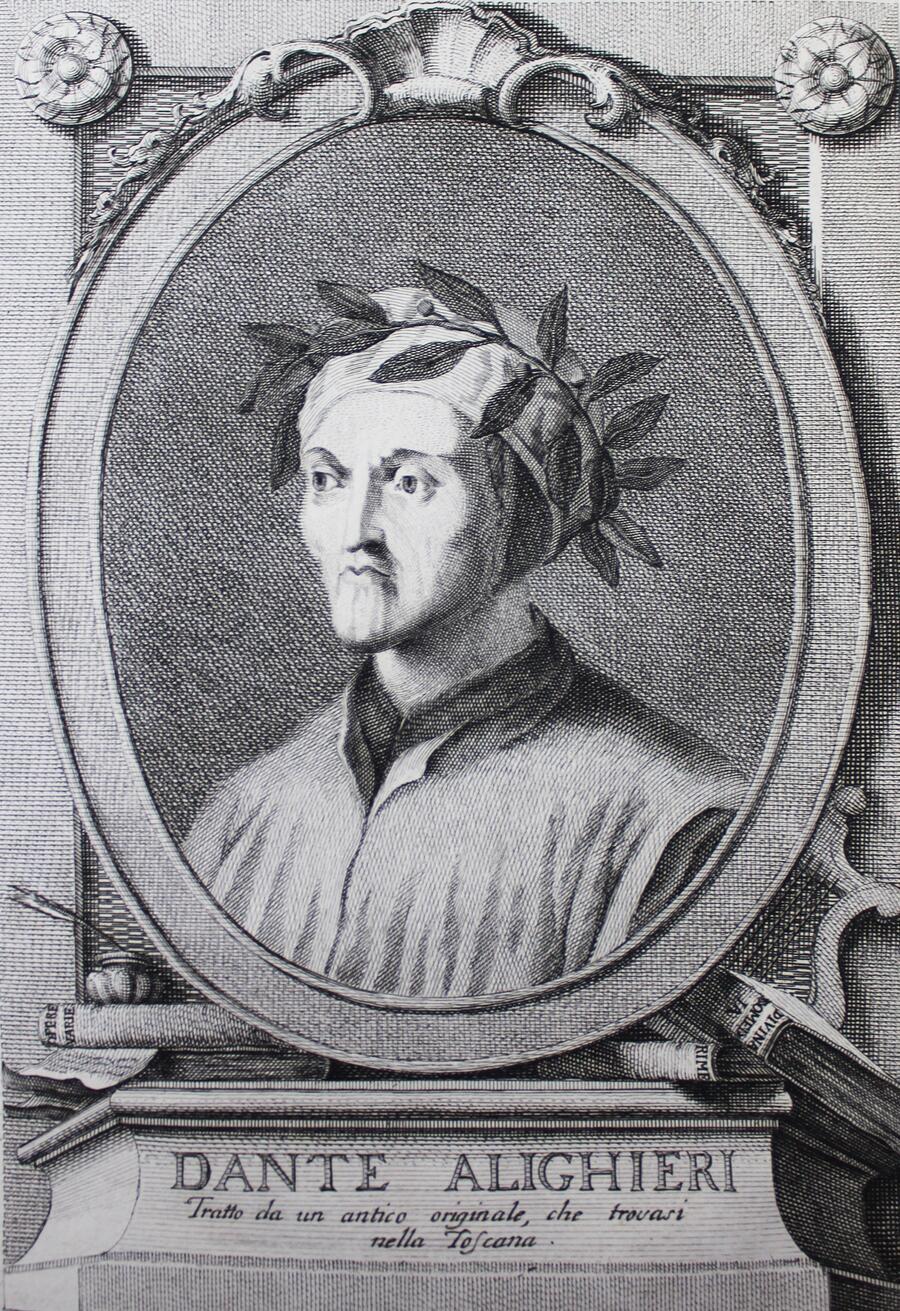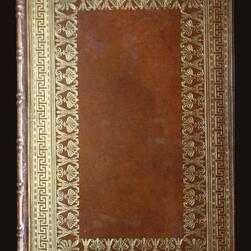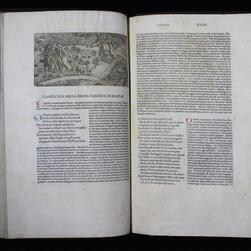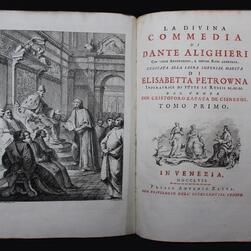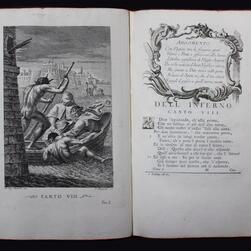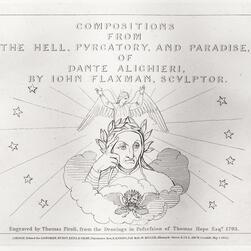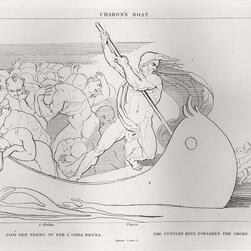Undoubtedly one of the star items in Soane’s library is Commento di Christophoro Landino fiorentino sopra la Comedia di Danthe Alighieri poeta fiorentino (Commentary by the Florentine Christopher Landino on the Comedy of the Florentine poet Dante Alighieri), published in Florence in 1481. This is the first edition and the first attempt at an illustrated edition of Dante’s Divina Commedia and also has the distinction of being the earliest printed book in Soane’s library. It contains 15 engravings after the designs of Sandro Botticelli, all but two of which were not printed on the text page but were printed separately and pasted in, due to the difficulties of printing text and illustrations simultaneously at this date.
The volume boasts a fine binding by the celebrated binder Christian Samuel Kalthoeber, dating from the early 19th century (Fig.2). Soane acquired this work towards the end of his life, purchasing it on 28 March 1829 for £40.19s.0d from the booksellers T. and W. Boone, who in turn had bought it at the sale of the library of George Hibbert, a noted collector and member of the Roxburghe Club. (Fig.3)

